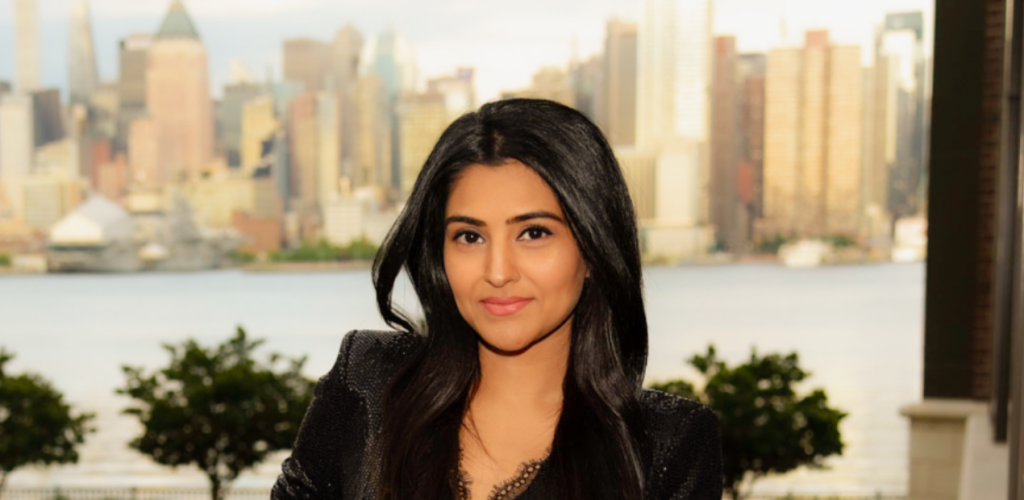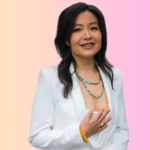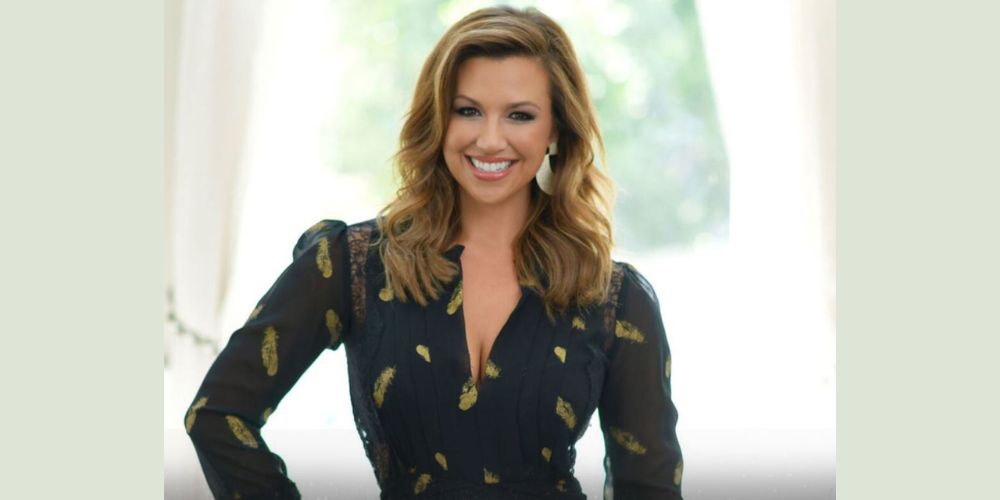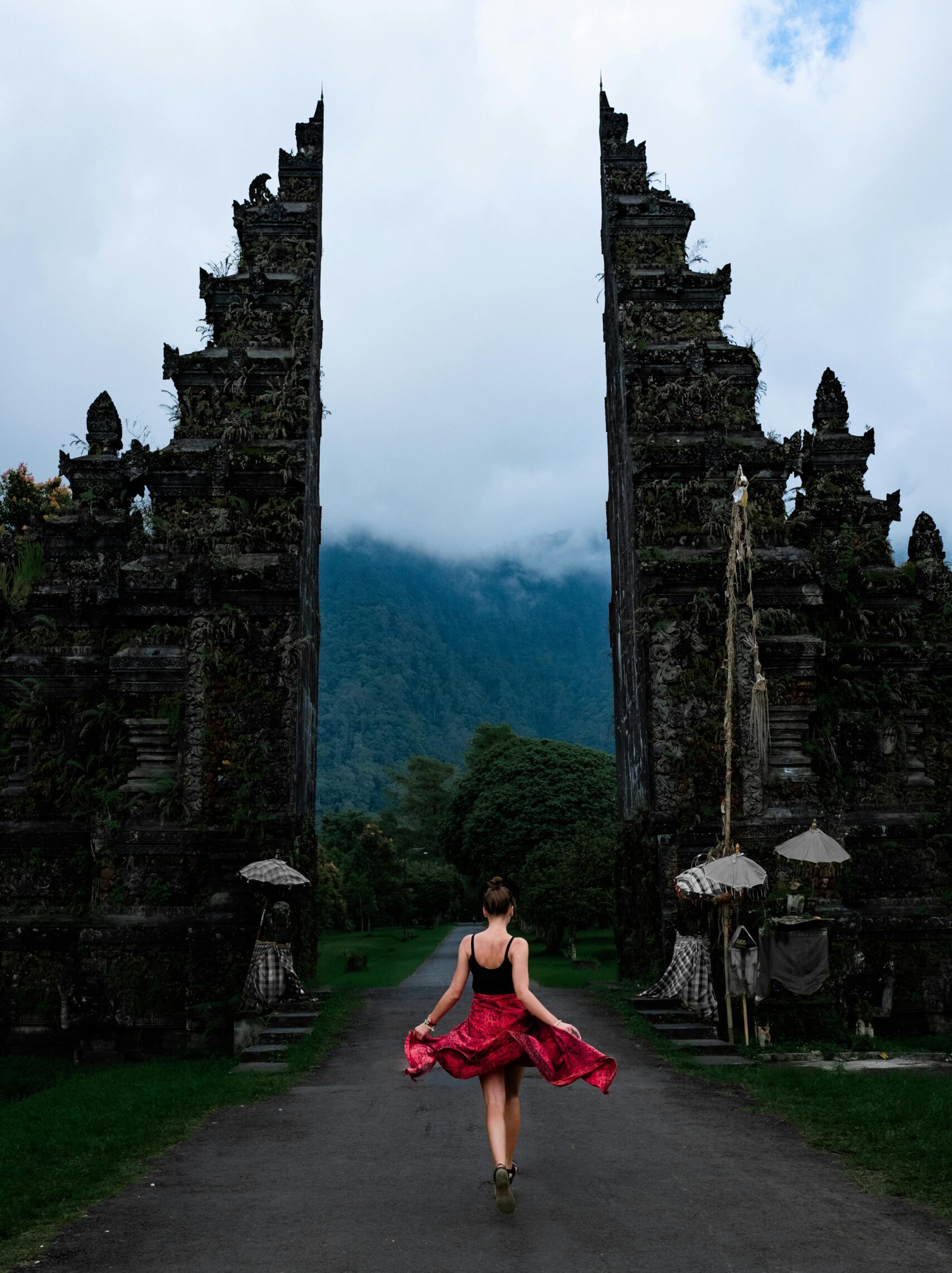Raj Girn: My guest today is the co-founder of Modi Toys, Avani Modi Sarkar, who has an interesting story about how she and her partner took an idea to meet a personal need and built a successful business around it. Modi Toys, founded in 2018, is a family owned South Asian cultural toy and book manufacturer and retailer, and their products are available on their online store moditoys.com. The physical location is in Edison, New Jersey, and at various third party locations across America.
I wanted to talk about this brand specifically to illustrate the power of branding to market a niche business because they just check off all the check marks and the story fits the bill to a tee in a short span of time. Not only have they cultivated a loyal community of followers and clients, but they have also racked up an impressive media portfolio with features in Forbes, Entrepreneur, Businessweek, Inc Magazine, and Good Morning America. Avani herself has been honoured with inclusion in the Forbes Next 1000 list and Inc Magazine’s female founder 100 list.
Here is our conversation:
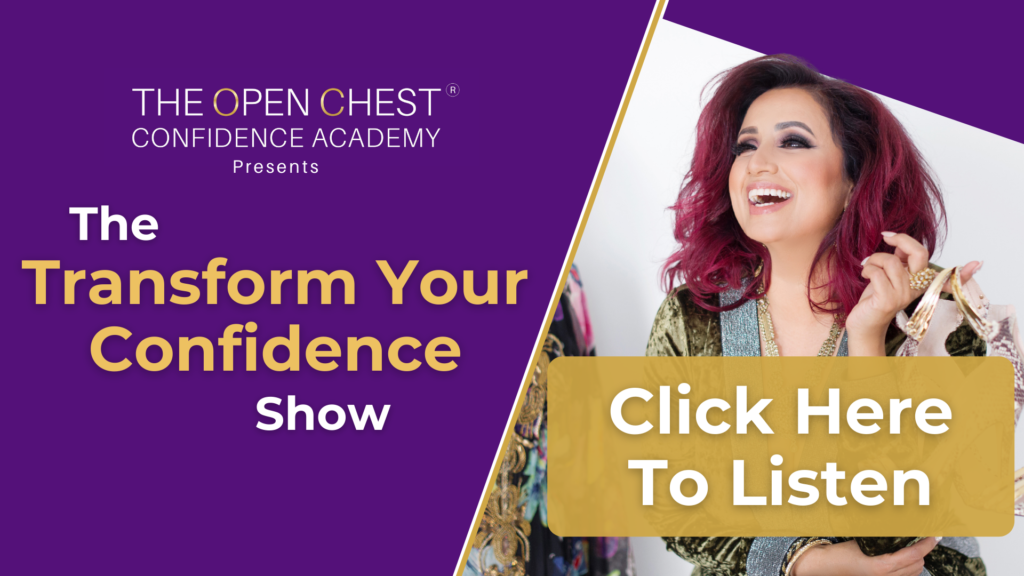
Raj Girn: Please welcome to the show entrepreneur, wife, mother and superhuman Avani Modi Sarkar. Sweetheart, you have no idea how I’m so excited to have this conversation with you.
Avani Modi Sarkar: I am just excited. It’s actually hard to believe that what you just described was actually me and our business. It sounds so surreal that three and a half years ago I could have never imagined that this is the point where we would be. So thank you for having me.

Oh my gosh, you have no idea, sweetheart. It’s just a sweet spot for me whenever I see women from my community. Women in general and women who have such a multifaceted responsibility to so many things outside of business that they’re able to actually do something like this. And I feel that this is something that is more than a trend now and is becoming quite a benchmark in our community. And I think that has a lot to do with the fact that we really do support each other, women in culture and women in business. I would love your thoughts on that before we kick off and talk about your journey.
Absolutely. I completely agree that this is becoming more and more the norm, seeing South Asian women really pursuing entrepreneurship. And if you think about it, it’s not that much different from what our parents did maybe close to 20, 30 years ago when when they immigrated here from India. My parents, I can speak for them, had a convenience store and they had no experience ever running a business of their own, no less a convenience store. And there are so many other families like that — families who went on to run a hotel, a motel, a gas station, a laundromat, what have you. They just dove right in and they figured it out as they were going because they were motivated by keeping food on the table, by making sure that they had money to send their kids to get a higher education. I mean, that was another reason that they came to America for all of these opportunities that it promised.
And I think it’s upon us now that we’re the next generation to really build on what the the foundation that they laid for us. And I think we’re all finding our own calling. And I think the one underlying theme that I see in everyone that’s pursuing entrepreneurship now is they’re trying to find ways to preserve the South Asian culture that our parents have done such a great job in immersing us in. But then it came so easily, just came naturally. It was almost like second nature to speak in Gujarat at home and make roti and subzi and dahl every day for dinner. But now for us, when we’re raising our kids, we speak in English. It doesn’t come naturally for us to converse with them in our mother tongue. We don’t necessarily make Gujarat food every single day for dinner. So, it’s become that much more challenging for us in our generation to immerse our kids in our culture. I think that’s where we’re finding the problem that needs to be solved.
Absolutely. And that’s a great preface to my first question to you, Avani. Your logo was very intentional. Let’s talk a little bit about the significance of creating that because it’s really well defined and everything that you just said.
Thank you. So my background is in marketing specifically, of course. Well, specifically in business and business marketing. I had never done retail marketing, let alone toy marketing or even online e-commerce marketing. So that was very new to me. But I knew that I wanted to create a logo that instantly made sense. I didn’t want to have to explain to people, “We put this here for that reason. And this look, this symbolizes…” When you see the brackets around or a logo instantaneously that denotes inclusivity. And that is so important.
I mean, that’s really at the crux of why we created our products, because when my brother and I became first-time parents five years ago, we were looking for toys that were representative of our identity. And there are tons of dolls out there that promote gender and race and all these other types of the different identities that people carry, but none that represented faith. And I understand that’s very personal. And sometimes it’s almost borderline somewhat controversial because people practice faith in their own personal ways.
But our parents raised us with these values and they’re very religious and we’re lucky that we’re able to retain a very small percentage of that because we realize with every generation the values that are passed on are going to become a little bit more diluted and they’re going to adapt to the culture that you surround yourself in. But nonetheless, it was important for us to try to preserve that. And honestly, we didn’t set out to become entrepreneurs. We just set out to be consumers. We just want to go and buy these types of toys naively thinking that obviously these must exist because it just seemed like such a common sense type of an idea. It’s almost like a pen. Everyone has a pen, of course it must exist.
“With every generation the values that are passed on are going to become a little bit more diluted and they’re going to adapt to the culture that you surround yourself in.” ~Avani Modi Sarkar
And when we walked the aisles of Target and Kohl’s and Wal-Mart and all these stores like Amazon and Google, none of them had what we were looking for. And that’s when the light bulb moment went off and it dawned on us that, well, if it doesn’t exist, then maybe we should create it. And if we’re looking for it maybe there’s other people looking for it too. And it turns out that over 25,000 people are in fact looking for it. So that’s really how the journey came about.
It’s interesting that you just said that because being that you come from a very strong marketing background, data points seem to be a big part of what you need to look at before you can identify if a personal need that you and your brother had is, in fact, a market place for you to be able to fill a need. And what did you see? Was there any research you did? Was it by mouth like with a data points online other than some of the things that you’ve already talked about that led you to believe that this could be a viable business opportunity?
Absolutely. We did not go into this completely, just going off of our gut instinct. So what I did was I initially just actually had asked my local moms group on Facebook. I put a photo up of my daughter holding the prototype of baby Ganache we had. And I just asked very simply, “Hey, my brother and I are toying around with this idea. We came up with this plush toy that sings mantras when you squeeze its belly. Would you buy this for your yourself or your kids? What age did your kids stop playing with plush toys and what would make this plush toy stand out from every other plush toy that I know you already obviously have.” Because my fear was that I know that all toys have a very short shelf life. And that’s just the nature of some of the items. So because of what these toys signify, you know, they’re deities in a sense, right? I didn’t want them to just be tossed away, forgotten, collecting dust. I wanted them to have a really special place in people’s homes and their hearts.
And so I got feedback from that first local mommy group. I realized, wait a minute, I can replicate this across all other mommy groups. So I joined as many mom groups on Facebook around the world as I possibly could. I started with Hoboken, New Jersey because that’s where I lived at the time. And then I ended up joining North Carolina, Dallas, San Francisco, Singapore, really wherever the Indian demographic is really densely populated. That was my logic and whichever Facebook group had high engagement because I wanted people to weigh in. And there were a couple of Facebook groups that were really engaged. As a matter of fact, it was because of those two groups that my brother and I finally got the confidence to really move forward because we had amassed over 1,000 comments from people. I mean, thousands of likes, but thousands of comments.
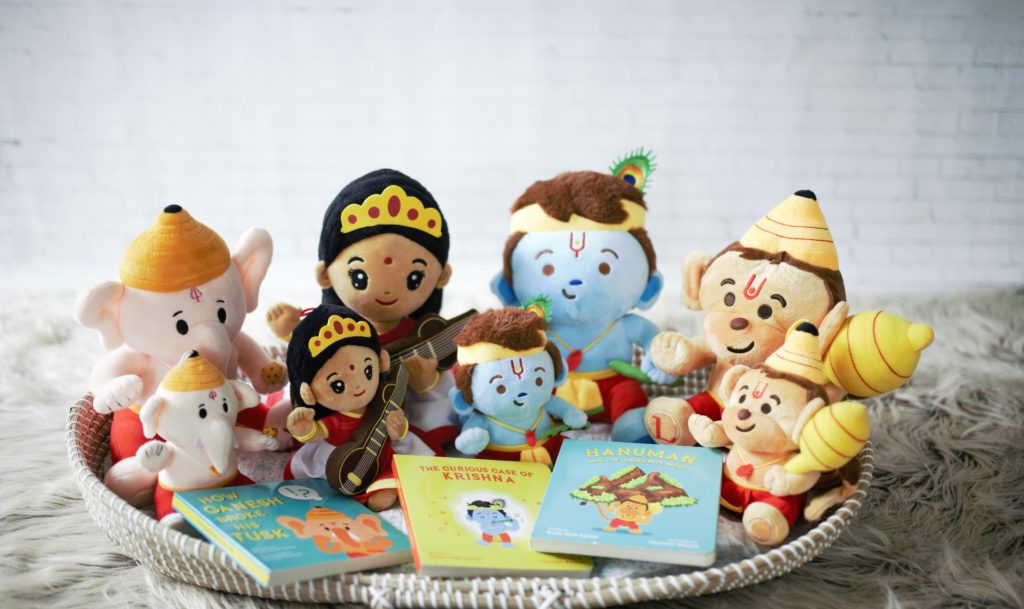
And the result and the reason for that is because my post actually ended up becoming a little controversial. The vast majority of the moms were very supportive and very excited for us to launch. But there was a small percentage of naysayers who thought that what we were doing, what we were setting out to do, was actually very blasphemous. They thought that we were taking something as sacred as religion, as idols, and now we’re turning them into a toy that could potentially be thrown around, kicked around and kids wouldn’t really understand how to really treat them with the respect that they deserve. And the argument on the flip side was that here is a teachable moment. Here is an opportunity for us as parents to explain to them that, “Hey, this is why you should not throw this toy around. Barbie doll, sure. Whatever you have with this line, you’ve got to treat it with utmost care and respect.”
And, at the time, my daughter was only one years old and now I have three kids. I have a six-month-old, I have an almost two-year-old and I have a five-year-old, so I can attest to the fact that you will have moments here and there, where the toys will be laying on the floor. But these are all teachable moments. And let me tell you, this sounds completely biased, but all of my kids, even my daughter, who is almost two years old . . . In fact, she’s the one who probably adores these toys the most. They have never mistreated them. In fact, they know that they are the same JJs that we go to our temple and we pray.
So I think all of those fears that people had five years ago before we had even launched and I think they’re all unfounded because as a parent, as the co-founder of the brand, I can confidently say that you don’t have to worry. But this is exactly what we’re hoping for. This is an opportunity for us to teach our kids and it’s really a way to spark curiosity in them. I mean, you can’t expect any single toy, any single book to just teach them everything. There is a teacher power or deep, rich culture, but it’s a way to start the conversation. It’s a way to at least get them engaged. And then the world is your oyster.
Absolutely. Did you find that when you launched the products that you got the same kind of backlash? Or was it really just a very few number of people? And, everybody has a right to their opinion and there is a fence on this as well, that it’s important that we understand how to respect those that we need to respect. But we also want to forget them. We don’t want their importance to be forgotten.
We don’t want that to be an opportunity where they don’t understand why this specific toy is different from this one. So you knew that this was probably going to be something that was going to hit the market. And as a marketer, I’m sure that you were looking at, how do I mitigate this? What would be the narrative that would need to go out in order to ensure that, you were able to at least minimize that because you can never completely change people’s perspective, right?
Rightfully so. And nor did we try to, honestly. We knew that this toy is not for everyone. We know that our brand is not for everyone. And despite there being 1.35 billion Hindus all around the world, we know that not all of them are going to be knocking on our doors. We get that and we have never set out to try to win over the hearts of people who just flat out don’t agree with what we’re doing, don’t agree with what our mission is because that’s not our audience. We want to really go after people who see value, who are aligned with our values, who don’t really see any malice in what we’re doing. Who are just like us. Who are perhaps immigrants themselves or children of immigrants. And now they’re raising first generation Indian-American or Indian-Canadian or whatever, just children born outside of India that are just trying to find ways to stay connected to their culture. And that’s always been our focus, not to try to convince people to buy our products, but those who naturally gravitate towards it make it easy for them to buy our products.
“We knew that this toy is not for everyone. We know that our brand is not for everyone. And despite there being 1.35 billion Hindus all around the world, we know that not all of them are going to be knocking on our doors. We get that and we have never set out to try to win over the hearts of people who who just flat out don’t agree with what we’re doing, don’t agree with what our mission is because that’s not our audience.” ~Avani Modi Sarkar
Spoken like a true marketer and this is a good lesson for everyone watching, listening or reading this is, is your mission with your target demographic to be to find those who are already bought into the importance of the value proposition? Or are you looking at changing the minds of people? And I think that this is a great lesson. You know what you’re hearing here that Avani is saying is find the people who already want what you want. It really is. There’s enough people even in that specific niche for you to fulfill what your mandate is with your company.
I want to ask you this Avani, product creation, getting the word out in the initial stages, pre-launch other than going to all of the various different groups, how did you go about making sure that the product was ready for market? Because this is the other thing: a lot of people have great ideas but then how do you know that the product is actually ready to go to market? And how do you get the word out there with perhaps not a whole heck of a lot of money? What did you guys do?
So we didn’t set out any crazy, ambitious goals, to be honest. We didn’t say that this will be our milestone that if we had $100,000 in our first year we’ll consider ourselves a success. We just wanted to make sure that we weren’t losing money. We just wanted to make sure that we could sell whatever inventory we had and we weren’t stuck with it for years and years and years. And luckily, that was never the case because we sold out of it within a month or so.
So what we did right, I guess, is that when we were on all these Facebook mommy groups, I ended up actually creating some really simple landing page on our website, moditoys.com that said: “Hey, if you’re interested in learning more about when we launch or being the first to get your hands on it, then please just give us your email address and will notify you when we’re ready to launch.” And I don’t remember the exact number of people that signed up for the waitlist, but maybe 2,000 or so.
Thats a great amount.
But I knew that not all 2,000 were going to convert. And I think in the end, a very small percentage, maybe less than 10 per cent ended up converting, but the remainder really came from word of mouth. So once the initial customers came and bought our products, they started sharing on social media. And then I’d also made sure to get our hands on the products of some key influencers at the time, of course. And yet like three and a half years ago, I would say that the South Asian influencer or the mom influencer space was still somewhat nascent. Nowhere, I think where it is now. You just didn’t see that many South Asian moms who had over 100,000 followers. Now it’s becoming more and more the norm.
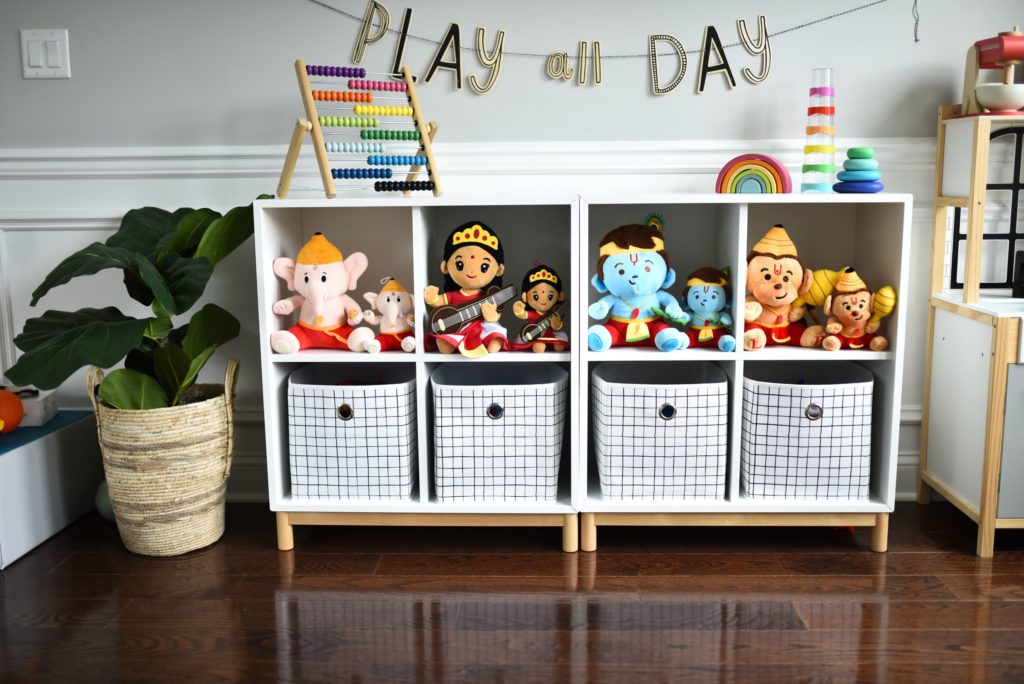
But three and a half years ago, social media, I think, was in a different place than we are now. So, I mean, it was a combination of having a wait list and getting our products in the hands of some key South Asian mom influencers. Just to get the the buzz going. And really that’s how it took off. I mean word of mouth is so powerful. I don’t think you can really undermine it. We didn’t spend any money on paid advertising. Probably at least a year and a half into our business. It was really just all word of mouth because we wanted to save every dime that we made and put it back into the business because, again, our focus was to just make sure that we had a viable product. We wanted to prove that and we didn’t want to actually spend more money than we had on just manufacturing the items.
Absolutely. So, when you got to that point where you had proof of concept for your business that this is definitely a viable product that has value to a specific niche demographic, what did you do next? Because it’s one thing having an idea and putting it out there. And the reason I’m asking you this Avani is that you’ve done this so well and I feel anyone out there that has a business idea that is in the product realm, I really want them to heed a lot of what you’re saying here to help them if they’re kind of stuck in any part of the process.
And my question here is that I wanted to ask you, you’ve got proof of concept. How do you then take that and systemize it so that there is . . . you’ve got the financing piece that you have to think about, the manufacturing piece, the quality control piece, the fulfillment piece, right? And then also the organic marketing that you’ve been doing so well with. How did you guys do that piece? Because without creating some sort of a process or system in any business is very difficult to then scale it later on. What have you guys done? I think it would be very valuable to share that, especially for online product based companies out there.
Yeah. Well, we were really slow and steady. My brother didn’t quit his then corporate full time job until a year and a half or so into launching Modi Toys. And I didn’t join full time until about a year ago. So that gives you a sense of how much attention we were giving our business. So we didn’t really have all of our ducks in a row from day one. We were working out of our parents’ basement. We had no employees. My brother would literally come home after work, and then he would be packing orders and schlepping them all in the back of his car to the UPS office.
I love it.
So much of that has changed now. Three years into it we have our own office, our warehouse space, where we have the FedEx guy coming to us every day as opposed to just schlepping our boxes over. But we were really slow and steady. So when we first launched with our Baby Ganesh collection we didn’t have a business plan, we didn’t have a product roadmap. We just wanted to see is this product even going to work? Let’s see how it does. And when we launched and when we got the response from people saying, “Oh my god, I want more. What are you coming out with? Baby Hanuman? Baby Krishna? Maybe this, maybe that. And that’s when we realized, we should maybe think about other products.
We had not sketched a single thing in terms of our next product until after we had launched Baby Ganesh successfully. And that’s why, if you notice for the first three years, we have been launching products at a fairly slow pace. I mean, when you think about, toy launches because an established toy brand was not going to want one product a year, right? But that’s the piece we’ve been going out because again, my brother and I, we were not focused on a business full time until much later on.
So whatever we could do in our spare downtime with little ones at home, that’s what we were doing. So we didn’t launch the Baby Hanuman collection until exactly a year after we launched Baby Ganesh. We didn’t launch Baby Krishna collection until a year after the Baby Hanuman collection, and we didn’t launch Saraswati Baby until a year after Baby Krishna. So there were all these big gaps. However, I think in retrospect this was not strategic on our part by any means. I think this was somewhat sheer luck that I think having these gaps in between really created more pent up demand. Because I think if we had flooded the market when we first launched three and a half years ago with Baby Ganesh, with Baby Hanuman with Baby Krishna people would have been like, “Whoa, okay I have everything,” or “Whoa, I don’t want to spend that much money because if I were to buy all of that, it’s a lot.”
But the fact that we’ve now allowed people to slowly over time grow their collection: whoever started out with Baby Ganesh in 2018 and then subsequently purchased Baby Hanuman in 2019 and then 2020 Baby Krishna, they were spending $50 at a time and that seems so much more manageable. And not a sticker shock as opposed to flat out getting $200 to buy everything all at once. And especially when we were not a trusted brand because when you first launch, you have to earn that trust. In fact, you have to earn that trust day in, day out. I mean, even three and a half years later I can’t just put up my feet, and be like, “Whatever, everyone’s gonna buy your product, we’re Modi Toys.”
I still have to make sure that we’re still doing quality control. We are still keeping our existing customers happy while also attracting new customers. So I think one of the advice that I would give is that you want to go slow and steady. It’s really tempting to launch with the whole kitchen sink, but you have to first see how the market reacts to just even one product and then build on your success. If you know that one product has done well, then great, replicate their success and see if it does well again the second time around. And then if you’ve been able to replicate the success two times, three times, it’s no longer a coincidence you’ve actually developed a successful formula, and then you can begin to iterate off of it. But you should really go slow and steady, especially when you’re entering an industry that you know nothing about. Because my brother and I, we didn’t come the toy business, right? We didn’t even come from the e-commerce space. So we were being really conservative, I think, in our approach.
“You have to first see how the market reacts to just even one product and then build on your success. If you know that one product has done well, then great, replicate their success and see if it does well again the second time around. And then you know that if you’ve been able to replicate the success two times, three times, it’s no longer a coincidence you’ve actually developed a successful formula, and then you can begin to iterate off of it.” ~Avani Modi Sarkar
Absolutely. But there is a lot of takeaways from what you just mentioned there. I think, one, that I feel that people really need to focus on is this whole idea of we feel that we need to create perfection before we do anything in business rather than putting it out there and see how the market taps into it. And that’s really a testament to what you guys did. You put something out there, you went to the right target demographic you understood, you knew what the demand could look like, even though I feel that you wouldn’t know that you’d sell out in a month, but you did, which is a great problem to have, right?
Because then you know that now we’ve got to create some sort of a system associated with being able to fulfill the wider market space. At what stage, Avani, did you guys look at this and say that there’s an opportunity now to expand, to go into the expansion phase where you talked a little bit about the product diversification, adding the physical store, looking at the scale opportunities? Can you share a little bit about where you’re at with that part of things?
That really came down to looking at our data. We looked at how we were growing month over month, year over year. And once we realized that this wasn’t a one hit wonder. It’s not like people say, “I have Baby Ganesh I’m good, you guys can stop.” There was always demand for more and more and more and that’s when we realized that we really stumbled upon something that’s needed. It’s not like we’re the only ones here who grew up in a religious household, and we thought that this would be a value for our children. But there are so many other people around the world who share our pain point. So let’s find more ways to help them meet those needs.
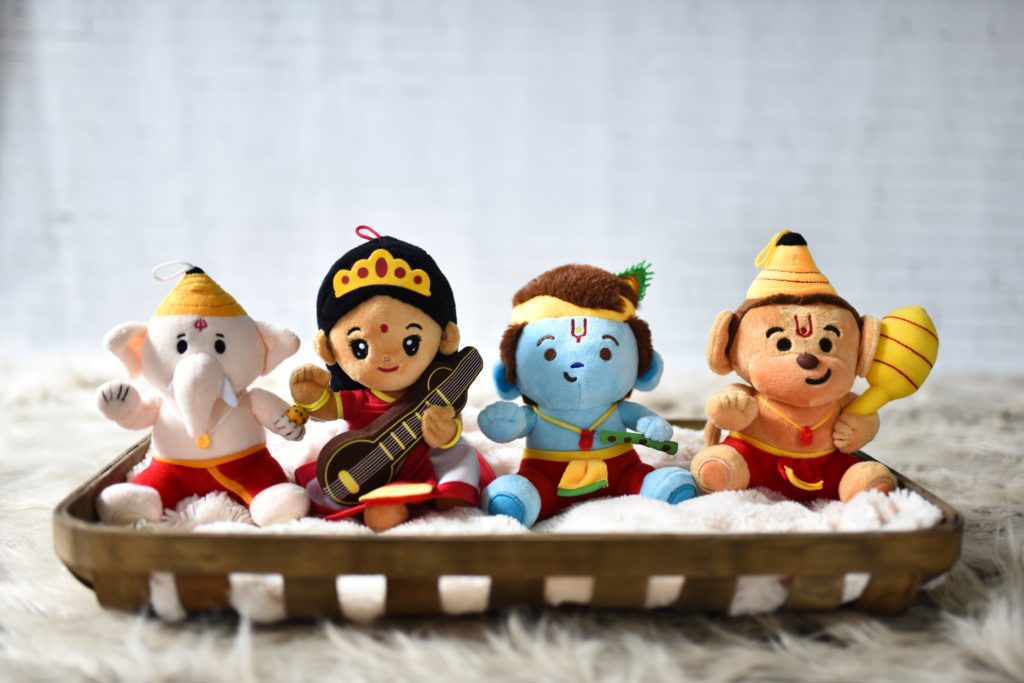
And so when we looked at our data, it showed that there are definitely some . . . we had sort of what we call the off peak season on the peak season, the peak season being the second half of the year when it’s like Raksha Bandhan and Diwali and Christmas. It’s the holiday season. And for Indians, the holiday season begins even earlier than the November-December time frame. So we realized that our products were really being viewed as great gift of all items because of their novelty, because of what they signified. And they’re just really meaningful.
You know, it’s not something that your kids are going to clamor for because like, “Oh, all my friends have it.” It’s something that I think parents want to give to their children. And that’s what’s really unique about the toy industry, right? It’s that you’re technically marketing to two sets of audiences. You’re marketing to the buyer, which is the parents or the grandparents or the aunts and uncles. And then you’re also indirectly marketing to the kids as well because, as the parent buying gifts, you want to make sure that your kids actually gravitate towards it. If they don’t care for it, or if you’re scared of it, you’re going to be like, “Well, maybe I wouldn’t buy this again in the future.”
But if you see that they have a really positive reaction to it and then you actually see them learning the mantras, reciting the mantras, and I see this again with firsthand experience. My daughter, who’s almost two years old, she knows how to sing Hare Krishna, because some of the mantras that our Baby Krishna sings, she can kind of start mouthing the Gayatri mantra. I mean no other toy in her pile of toys has had this effect on her right? I mean she is going to learn to sing the alphabet. She’s going to learn to sing all these other nursery rhymes in school. In fact, she has been learning but no one is going to teach her these mantras other than perhaps her grandparents and now these toys.
So we really just wanted to focus on creating toys that provided value that couldn’t be found elsewhere. And really we’ve been focusing on taking something that exists, that people are familiar with, like a plush toy, a children’s board book and now a crib mobile and really putting our own spin on it because it’s a lower hanging fruit for people, right? I mean, it’s not an unknown look. Everyone knows what a crib mobile is. They know how it functions. They know the purpose it serves. But now that we can put our own sort of mission behind it, our own spin on it, it becomes that much more of an easier sell.
“We really just wanted to focus on creating toys that provided value that can’t be found elsewhere. And we’ve been focusing on taking something that exists that people are familiar with, like a plush toy, a children’s board book and now a crib mobile, and really putting our own spin on it because it’s a lower hanging fruit for people.”~Avani Modi Sarkar
We finally got to a point where we decided to take a bet on ourselves that what we know, that we eventually have to get to a point where we start buying in bigger, bigger and we begin to buy bigger inventory because before we were making somewhat conservative bets. And obviously, not buying that time because we don’t have the space for it. Right now we’ve gone to a point where we can afford to take bigger risks and just not have to worry about finding places to store these things. But, I mean, we want to really have a place that we can call our own and also make it easier as we hire more people, as we grow our team to give them a proper place to come and work because we’ve gotten to a point now where we need to hire full time employees. Just having part time help or having contractors or freelancers is is actually hindering our growth as opposed to helping our growth.
I love this. This is such a great story of a personal need. But then you realize there was a bigger marketplace and many people were like you, looking for the same things for the same reasons. And here you are just really changing the whole generation really. If you think about it here, especially here in North America, that’s a pretty big responsibility, but one that as a mother, I know you take really seriously. What are your hopes and visions for the future with Modi Toys?
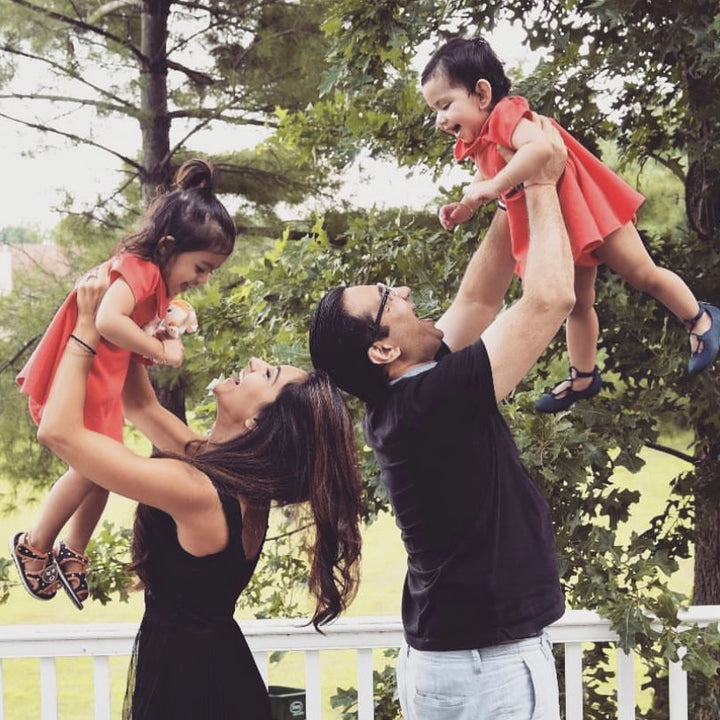
My hope is simply that I want, not just my children . . . I mean, really, that’s what that was, the whole genesis of my kids and my brother’s kids to grow up with the sense of appreciation and connection to their South Asian heritage. The Hindu roots that we grew up with. I understand, and obviously I’m being realistic in the sense that with every generation you lose a little bit of what you carry. So I know that they are going to have their own sort of diluted different version of what it means to be Indian, what it means to be Hindu. But as a parent, I feel like it’s my duty, my responsibility to at least expose them to their roots, at least introduce them to it, to at least try my best to ensure that they feel a sense of longing for it.
Avani, can you share the brand’s mission and values? Because I feel like you just did. But for those who just really need an encapsulation of it, what is your brand’s mission and values that you use to specifically attract and connect to your consumer base, your potential growth of clients? What would that be if you were going to encapsulate it?
We make toys that spark curiosity and help people stay connected to their roots, in a nutshell.
“We make toys that spark curiosity and help people stay connected to their roots, in a nutshell.” ~Avani Modi Sarkar
I love it. That’s powerful, and it’s palpable. You’ve cultivated a strong brand presence by building community around a culture- and lifestyle-focused content strategy that I’ve seen on your socials that you guys just do really well. It pulls you in whether you are someone from the community, your culture, whether you’re someone that’s looking from outside of our ecosystem. Can you share a little bit about why this is one of the best ways to create consumer loyalty? Is this whole idea of creating content around your brand? Just for those people who don’t fully understand the connection?
I think you have to put yourself in the shoes of your target audience and then one of the benefits I have is that I am my target audience. I am the type of person that I want to sell to. So it’s so great when you do market research, right? Because I have to ask myself first before anyone else, “Would I want this? Would this interest me?” Even so, whether it’s me writing an email to our customers, whether it’s me putting up a social media post or whatever it is, obviously when we’re developing a product I have to first ask myself like, “Well, do I want to give this to my kids? Would I buy this for my kids?” So I always put myself in the consumers’ shoes first and foremost.

And you know, again, like when it came to social media, I didn’t have a business plan. I didn’t have a content strategy or calendar any of these methodical things that, perhaps like a big agency might advise you to do. I went with my gut to be honest. And when I was starting out my reasoning, my logic, was that, “Well, I don’t have a ton of fancy photos to put up right now.” I didn’t invest in a professional photographer, a professional photo shoot until two years into our business.
Wow.
Yeah, it was me going around people’s homes taking photos of our products. And that’s how I got initial photos for our website, for our social media page. But initially, I was just trying to connect with people because people don’t buy from companies, they buy from people. And one of the advantages that you have as a small business is that people want to know, who are you? Who am I buying from? I want to get to know you because they feel this sense of . . . power is not the right word. But the fact that they can have direct access to the CEO or the co-founder of the business if they want to complain. Whatever it is, they feel like they can go and talk to them directly. So I think they feel a sense of closeness when you reveal yourself and you showed them who you are and why you start this business and why they can trust you.
“People don’t buy from companies, they buy from people. And one of the advantages that you have as a small business is that people want to know, who are you? Who am I buying from?” ~Avani Modi Sarkar
Because you know, when you’re when you’re the size of Amazon and Google you don’t need to worry about who the CEO is or worry about who the founder is because the brand carries itself. But when you are small enough, there is no brand, right? It’s really you as a founder, you are the brand. So initially, it was really just me trying to connect with people one-on-one and I suppose me thinking one too many. And then over time, as we started to grow, I realized that we were no longer attracting or appealing just to South Asian families. And many of our customers were actually those that come from multicultural families, those that perhaps married outside the race where the husband and wife were Indian, or perhaps they knew someone that wasn’t a multicultural family and they want to give them our product because they thought it was so novel.
And I was curious about them. Like why? When I first started again looking at the data and I started seeing last names like Smith. Who are these people? And I was curious to get to know a little bit more about them and their the dynamic of their family. And so that’s kind of what kicked off the Modern Family series that I’ve been now running for almost three years straight. And because that series grew so much, so much engagement, I realized that people were just as curious. It’s not just me. So really, a lot of these things start off with me trying to close my own curiosity and it turns out that, well, whatever I’m interested in it turns out that other people are just as interested in it, too.
So now it’s gotten to a point where people are coming to me and saying, “Hey, are you accepting submissions? Can I share my family’s story or my story about my relationship?” And I love it. I love the fact that our toys end up in scenarios that I would have perhaps not have envisioned. Again, four years ago when we were just getting started is actually what’s so fascinating to me. And like as a storyteller, I want to learn. And then it’s just like that much more. Finally, being able to share their story. A perfect example is . . . It’s actually a really heartbreaking story of a woman who reached out to me when she saw our modern family posts, and she told me that she wanted to share her story. And it turns out that her husband actually passed away within a week of them getting married. And he was a big Hanuman devotee and he even had a tattoo of Rahm on his chest. And their story was just so incredibly heartbreaking. But the fact that she wanted to share it with the world told me the power of storytelling.
I mean, we have a lot more uplifting and heartwarming stories like those too. Recently posted last week about a gay couple that became a family of three via surrogacy. And I saw that they have our entire collection. Their daughter’s name is Aria. And again, I could have never imagined the fact that our toys would end up in places where people are either mourning the loss of a loved one because it’s helping them cope or they’re celebrating the life of a newborn and they’re just excited for the world of them.
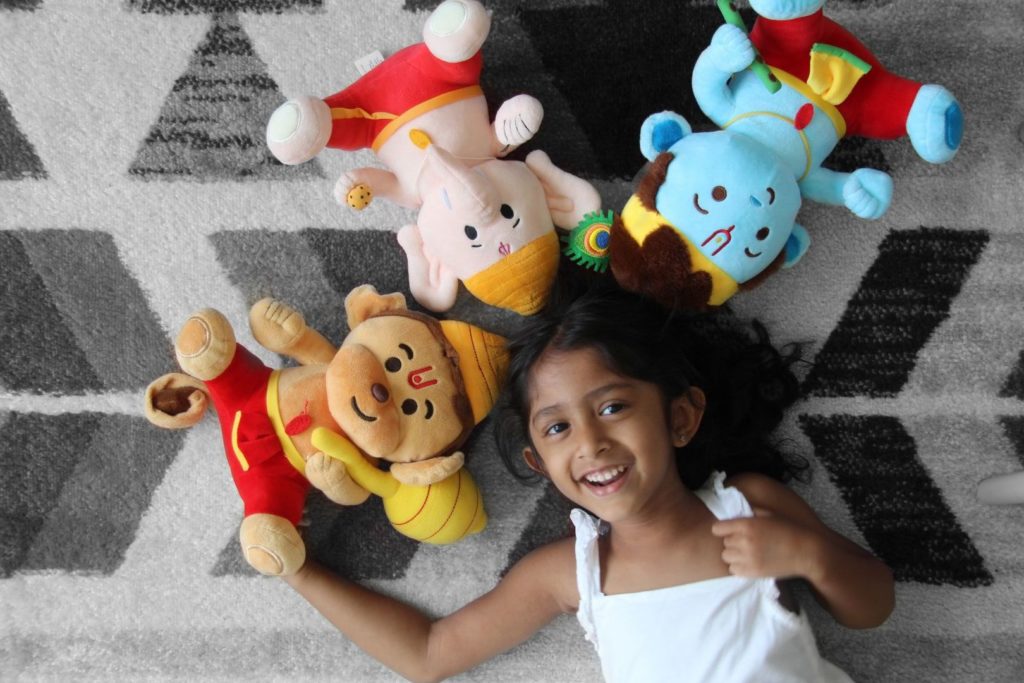
So over time, I would say that what has really helped me in developing our content is the fact that I’ve always been listening. I’ve always been listening to the way our customers have been really using our products. I would have never thought that one day a mom would think to bring our toys and put them on the bedside of her four-year-old boy in the hospital undergoing chemotherapy and is there for three months straight. I would have never thought that a grown women, my age, would be bringing them to her doctors appointments for fertility treatments. I would have never thought that a 90-year-old grandmother would be keeping it in her lap as she’s praying for her husband’s well-being. It’s just all of these different scenarios that I never envisioned, and I realized that I need to share these stories. These are really powerful stories.
And again, it wasn’t me being strategic about my content. It was just me listening to what I was hearing and then me giving it a megaphone and amplifying these stories. And the more I share these stories, the more I think it encourages other people to come forward and share their stories with me because that’s when I started hearing, “Well, hey, you know, I have also experienced a loss, and this is how your baby can help me cope.” Or “I also became a first time mom after years of trying. And this was the first toy that I bought because I want to bless the nursery.”
So just the fact that I was hearing so many unexpected stories like these, I realized that I have the platform so why not just share them? So again, I think you would be a little remiss if you think you have all the answers when you first start your social media account, thinking that you should know exactly what to post every single day, every single week. You have to see what you’re hearing and then build on that and just take it day-by-day. I think that’s the same approach that we’ve had with our business. We don’t have all the answers, we didn’t have a business plan to begin with. We were taking it day by day and just listening to what the market was telling us.
“We don’t have all the answers, we didn’t have a business plan to begin with. We were kind of taking it day by day and and just listening to what the market was telling us.” ~Avani Modi Sarkar
Absolutely. This is the reason why I felt that the story of Modi Toys would be perfect just to really share the power of branding. And it really is the most powerful tool to market a niche product, to grow a niche business. Avani, as we get ready to close off what I feel I have like a thousand more questions, but we’re going to bring you back on, right?
We’ll do a whole other thing as we see and follow and continue the journey that you’ve been on, which clearly has been intentional to some degree because you were filling a void that you needed for yourself that you then realized is actually a bigger void that needs to be filled. But then also all of these other elements, these other arms of value started to come out as you’ve mentioned and I feel that has really helped grow your brand, help grow your cultivating this really strong, lifestyle centric ecosystem around what you guys post from a content perspective. And it’s funny because when you look from the outside, a brand like yours, you think, God, everything just seems like it’s so intense. That it’s all intentional.
That it’s all planned out.
Yeah, but here you are saying that really, we’ve been just been flowing with it and meeting the needs that are coming forth. This is what I’m hearing you say.
Absolutely. I could not have gone and said to a cancer patient “Hey, do you want our products?” It was really, you know . . .
Inappropriate, right?
Well, exactly. It’s very it’s very me, right? It’s really about you. So it’s when these types of customers reveal themselves. To me, that’s when I thought, “Well, gee, if our toys help this one little child undergoing chemotherapy, then yes, perhaps now it does make sense for me to grow and reach out to other people facing other illnesses or life threatening illnesses. And and that’s when I started thinking beyond just the playroom.
For anyone out there, Avani, who is looking at starting a business that has an online component that is very niche and targeted and is innovative, something that we don’t really know if there is a market out there for that. You’ve done all of this. Looking back. What advice do you wish you had that you’d like to share with them now through having gone through this journey?
I would say definitely make sure that you have a supportive village because we talk about it takes a village to raise a child. A business is no different, right? It’s your baby and you really have to make sure that you have the support that you need at home and in your professional setting. And for me, the two lines kind of blur because I work with my brother and I have three little kids. So obviously when I’m sitting here in my home office, someone’s got to be taking care of my kids, right? So that’s going to be addressed.
The fact that I work with my brother and whenever we have disagreements, it can get really personal. So how are you going to do conflict resolution? And these are the things that you don’t really think about until you’re thrust into that situation. So I would say definitely make sure that you have a village around you that supports you. And in my case, I would take it even a step further and say that if I didn’t start this business with my brother, I don’t think we would be where we are.
We both bring very different and equally valuable skill sets to the table. My focus has always been on sales and marketing. I can confidently say that whatever sales we’ve driven to date, I have driven that and nowhere in the history of my professional career of 15 years when I was working in all these other big companies did I ever drive that much money for a company. So that’s pretty amazing, but my brother, he is responsible for the entire operations of our business.
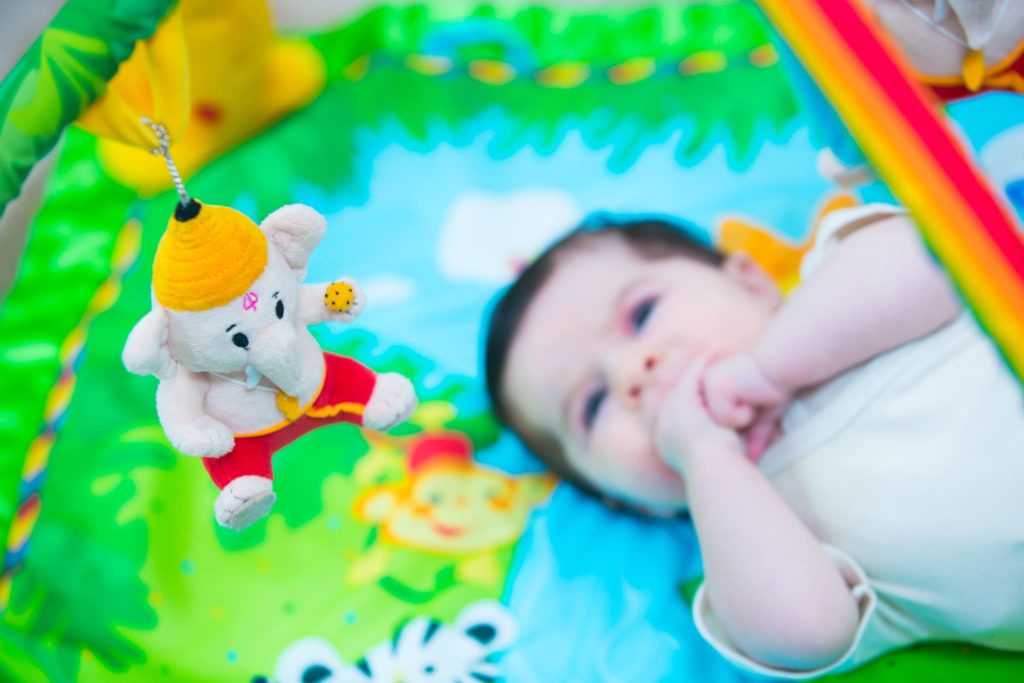
And whenever I am working on anything besides sales and marketing, that’s much less time I’m able to devote to what’s my key strength. Now that we’ve been able to focus on our individual respective strengths, I think is what has allowed us to grow at the slow and steady pace we’ve been growing at. I would have had to to either a) step away from my strengths of sales and marketing to go and learn the other side of the business or b) I would have had to outsource and hire someone. And you know, you’re buying their trust, right? With your sibling you have this inbuilt trust.
So I would say that if you can, in that village, find people who can complement your strengths and compensate for your weaknesses, that’s what’s really going to help you propel. And it’s the same analogy the fact that if I’m not able to be a present mom to my kids, is there a caretaker who I can leave my children with? Because, I mean, that’s just as important, too. So you need to have the support, honestly.
You are such a delight and a pleasure Avani. I want to send everyone to where the people need to go to go hang out with you guys. We’ve already talked about ModiToys.com. Where else can we send people?
Come hang out with us on Instagram. I am still trying to figure out TikTok, so we’re not quite there yet. Instagram is really active and also on Facebook.
Wonderful, Avani. Thank you so much for coming on to share your story. You are what the American dream is made of, but you’re doing it in all your own unique narrative. And I feel that’s the other big takeaway here is don’t lose sight of who you are and where you come from in order to be able to step forward into the world that you now live in. I think that’s the other important part that you have constantly been sharing throughout this episode that I really hope people really heed on.
And the reason I’m saying this is that I remember when I was born in England in the ’80s there was this whole thing where in order to fit in and to move forward, we had to kind of lose a lot of the narrative of who we were as South Asians. And now here we are, where we’re using it actually to propel ourselves forward and without feeling that we need to choose anymore. And I think that’s the big fundamental thing that is creating businesses like Modi Toys. Thank you so much, sweetheart. Anything else you want to add before I let you go?
No. Thank you so much for having me on. This is really great and I hope to be back soon.
Thank you so much, sweetheart.
Guys, I really hope that you got some real value from today’s show and you’ll share it with everyone you know who you feel needs to get today’s insights.
I also hope that you’ll subscribe to my YouTube channel at The Open Chest Confidence Academy. Also, go to podcast platforms and search ‘The Transform Your Confidence Show.’ And if, like me, you prefer to read hop on over to our website, to the blog at theopenchestconfidenceacademy.com/media/podcast. And I can’t wait to share another episode with you guys.
I really love being able to bring on people like Avani for you guys to really be able to tap into their experiences and the why behind what they do. And that’s the big thing here, right? Why? What is it that pushes us forward and helps us get through the daily grind of these big visions that we have of the future? It’s stories like this and that’s what’s so important to me. You know, you guys know that my goal is to help you guys build and empower your confidence in your business and in your lives. I really hope today’s episode helped you do that on some level. And I can’t wait to see you next time.
Have a great rest of your week.



